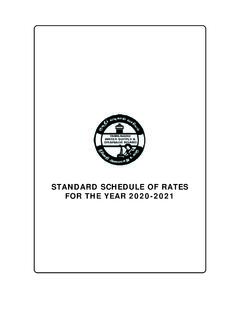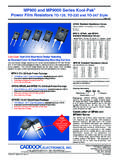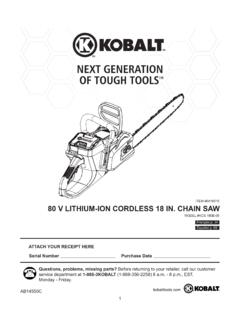Transcription of INTRODUCTION TO HAND SOLDERING - eLabtronics
1 INTRODUCTION to Hand SOLDERING Technology and Electronics Practical Exercises Incorporating eLabtronics ledfun Student Resource Booklet Name: INNOVATIVE CONTROL SOLUTIONS. Office: 51 Byron Place, Adelaide, South Australia 5000. Email: Web: Telephone: +61 8 8231 5966 Fax: +61 8 8231 5266. Acknowledgements This manual is a compilation of materials from several sources and authors. Miroslav Kostecki Chief Engineer for eLabtronics Derek M Fuller Gleeson College, South Australia Stephen B Fribbins Training Consultant, South Australia Original material used in this publication is copyright of eLabtronics and the authors. Permission to reproduce original materials must be sought eLabtronics . Other Sources The Microchip Technology Inc (USA) website Disclaimer eLabtronics reserves the right to make changes to the product described. The manufacturer accepts no liability for any consequential loss, injury or damage resulting from the use of this product or from any errors or omissions in it.
2 The specifications presented in this product are not to be deemed as forming a contract either in full or in part. 2. What you should know about Electricity Electrons form a part of every atom. Some electrons can free themselves from the atom. An electron is an invisible negatively charged sub-atomic particle. Because it is negatively charged an electron can move towards a positive charge. The force needed to move an electron is called the Electro-Motive Force (EMF). The size of the EMF can be referred to as the Potential Difference or Voltage and is measured in units called Volts (symbol V'). Once the EMF is applied to the electrons and the charged electron is moving you have produced an electric current. (An electric current is produced when the electrons move through a conductor). The size of the electric current can be referred to as the Amperage and is measured in units called Amps (symbol A'). The resistance (electrical friction) of a conductor is a measure of the force applied by that conductor against the flow of electrons through it.
3 The size of the resistance depends on several factors, (length, type of material, thickness, and temperature of the conductor), and is measured in units called Ohms (symbol R' or ). 3. Electronic Pathways for Year 9 Students Information for students Aim To introduce students to a current blend of science and technology, systems and processes via electronics, whilst developing a knowledge of components, circuit board manufacture and hand SOLDERING skills to allow an informed choice in Year 10 when students are able to undertake both SACE and TAFE courses in this field of study. Prerequisites Students should have some basic understanding of the following topics: Charge and statics Voltage and current (AC and DC). Resistance/ Load on a circuit Power sources (cells, batteries, power packs, mains). Types of circuits (open, closed, short, series, parallel). Effects of placing globes in series/parallel Effects of placing cells in series/parallel Conductors and insulators Switches, fuses and safety with electricity Teaching Objectives Introduce basic skills and terminology associated with hand tools, SOLDERING irons, tip care and SOLDERING techniques.
4 Component recognition, awareness of the existence of value codes and the importance of component polarity. Printed circuit board purpose, recognition of layout, footprints of components and relationship to circuit diagrams. Basic debugging involving the simple use of multimeters. Develop safe working practices with electricity. Enhance problem-solving skills, fine motor skills, cooperative learning practices. Introduce female students to a wider range of science/technical experiences than has previously been available. Prepare students for Integrated Circuit programming in Year 10. Where does this unit lead? Students who successfully complete this unit (they need to score at least 65%) may apply to undertake a TAFE Hand SOLDERING course (NE29) that is run one evening a week after school for one semester, in a bus, on the Gleeson Campus. In conjunction with this the College offers a VET course (which is SACE and TAFE courses combined to give dual accreditation two qualifications for the one unit of work) in electronics.
5 This is begun in Year 10 and, if passed in Year 11, will give them formal recognition of their skills and open up many job, apprenticeship and further education opportunities in the electronics industry. South Australia will require 7,500 trained personnel by 2005 and a quarter of all University courses will be in the electronics field by 2010! 4. Requirements: Consumables (2 students' work goes in one labelled plastic lunchbox). Each student will need access to the following: Solder practice board (in a resealable bank coin bag labelled with student's name). 12 x watt resistors 10 cm of mm tinned copper wire for staples 80 cm of mm 60 / 40 multi core solder 5 cm of mm desoldering wick 3 cm piece of lollipop stick ledfun kit (to be kept in a resealable bag labelled with student name). Tools One set between 2 students in a pencil case (16 sets). SOLDERING iron and appropriate tip (2 types 8 red pencil cases for white SOLDERING irons and 8 blue pencil cases for blue SOLDERING irons).
6 (The tips for the blue irons have a 7' stamped on the flat inner end). Sponge in a polythene bag (larger sponge for blue irons). 3 x 90 mm pliers flat nosed, needle nosed, side cutters One set per bench in a large bucket (8 sets). 4 sets of Helping hands (with magnifying lens if required). 2 multimeters 1 set of tweezers 1 set of desoldering tools (1 solder syringe and set of hand tools in red plastic case). 1 mini screwdriver set Soft toothbrush for cleaning circuit boards Chemwipes On the trolley as required 120 mm side cutters for heavy gauge wire cutting (16 pairs). Wire strippers for removing plastic coating on leads Distilled water for sponges Ethyl alcohol (ethanol) for cleaning flux off boards RMA flux for desoldering Magnifying lenses for helping hands (18 with adapters fitted). This unit should be completed in 4-5 weeks. So don't waste time, there's a lot to do! 5. Getting started Students need to be aware of the following procedures and safety matters: WARNING.
7 No solder, wire, links, resistors, plastic sleeving or any other materials (especially metals) used in connection with this unit of electronics must be allowed to go into the sink. Chemicals poured down the drain after them could result in dangerous reactions and maybe even poisonous gases being given off. (Remember: acid + metal = hydrogen gas). Cutting any wire other than soft copper, tinned copper wire, component leads or solder with the small 90 mm side cutters will ruin them instantly. Staples and paper clips are made from hardened spring steel and they must NOT be cut with these pliers. Mains electricity (240 volt) will not be connected to any electronic components (normally they run on 0 6 volt. More than this can cause them to explode!). Burning holes in the SOLDERING stations is mega-dangerous there are 240 volts inside! Learn how to wind power cords around power packs and SOLDERING irons, hold them correctly and store them safely in the correct location.
8 Select the appropriate pencil case of tools for the SOLDERING iron being used. The BLUE pencil cases contain the correct larger sponge and tips for the BLUE SOLDERING irons. If in doubt the blue SOLDERING iron tips have a 7' stamped on the end of the tip indicating an operating temperature of 700 F. Learn how to insert the correct tip in the SOLDERING iron, tin it when new, select correct heat setting (on the white SOLDERING irons this is critical and must be set at only 365 C/700 F) and keep it clean during use. Very importantly remember to tin it at the end of the session just after switching off, otherwise the casing will be damaged and the tip will go rusty and not solder properly if at all. Identify each of the pieces of equipment and the tools by their proper names. Identify your own work with a permanent marker pen on the printed circuit board. Use only distilled/demineralised water on the sponges (sponges must be kept in sealed/folded polythene bags).
9 Leave time at the end of a SOLDERING session to cool the tip down before removing it and replacing it in the wooden block on the trolley. (The damp sponge can do this if ou are pushed for time). You should try to gain experience on both types of SOLDERING irons remembering that they must use the correct tip for each type. Look at the project kit at this stage and observe each of the 8 different functions and circuit plans. Start thinking carefully about the sort of device/game you are going to make around the kit and what resources you are going to have to gather in readiness to 6. make it. Use homework time to gather resources well before production dates and ensure that it is not overly complex or difficult with the possibility of missing the due date. Your choice of function/mode can be altered if you don't like the end result just by using the de- SOLDERING procedures you are about to learn and then changing some of the components (resistors) to those on another circuit plan.
10 Consequently you should keep all the spare components issued with the kit. In the final project make sure that all the components are correctly fitted before SOLDERING and then check that all solder joints are sound with no sign of bridging (short circuits) before fitting the IC. IC's are easily damaged by reverse polarity. Knowing how to set up and connect a multimeter safely to read current (in series), voltage (in parallel) and resistance (across component when disconnected from circuit and all power is off) can be useful in fault finding, looking for open circuits, short circuits and checking battery condition. Your work will be marked as you go. Take careful note of the points in the instructions where work needs to be presented. You should bring the booklet with the appropriate marks page opened and ready when you present work for assessment. Please be patient and listen carefully to the feedback. Good feedback from the teacher will help you gain extra marks!








